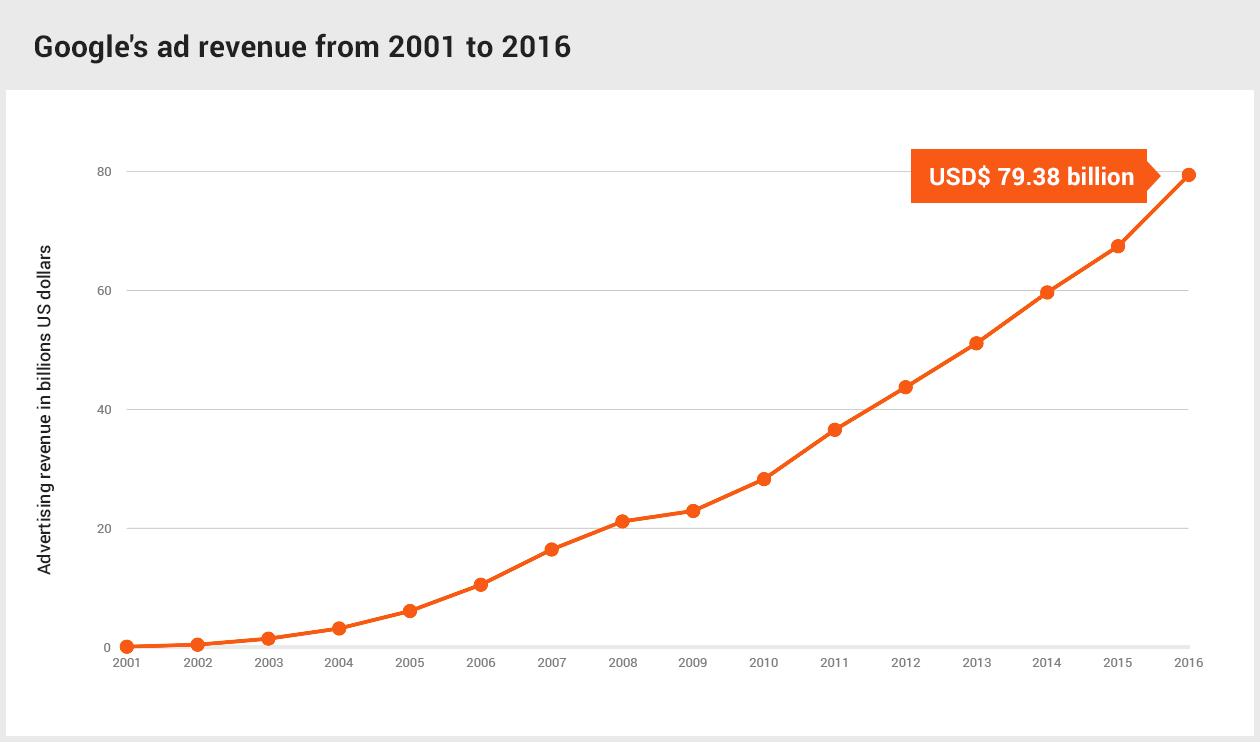01 November 2017
The world of B2B marketing is rapidly evolving. The modern customer searches for products, services and problem-solving - online.
23 years ago, when JWPM first hung up the shingle and declared itself one of Australia's first b2b marketing agencies, the world was a different place.
We were placing advertisements in trade magazines (people used to actually read them), database marketing and direct mail was big; thousands of product brochures and capability statements were "mailed out", and the primary b2b marketing "weapon of choice" was a sales rep with a "Flight Deck" membership and a big expense account.

Then somebody invented the internet.
Nobody really noticed at first. The early sign was this new thing called "email." The geeks and the "try-hards" adopted it first (about the same time high visibility vests became common on construction sites and tradies started carrying around mobile phones the size of a brick ). The first signs of being left behind were the embarrassing "I'll send it to you - what's your email address?"
Industrial companies (manufacturers, engineering firms, construction companies, machinery and component suppliers, contractors) were slow getting on board...
As late as 2005, when we suggested "you need a website", the most common answer was "what for? nobody we deal with uses the internet."
By 2010, most companies had a corporate website, it took them 2 years to organise, cost more than they thought they should pay (unless they used a teenager - and many did), and once finished - they never touched it again for 5 years.
"Then, just as they thought they'd caught up, a new thing called social media emerged."
B2B digital marketing today.
It's 2017 and the internet is now a front-line branding, lead generation tool, and (for many companies) the means by which customers buy products.
And this includes industrial products. "Business-to-business transactions" is now the fastest-growing segment on the Internet.

I think you get the idea - you need to get with the program.
So, here's some advice about how to get on board and/or how to do it better...
How to win the B2B digital marketing battle
- Home truths about SEO
- Google is grabbing an increasing share of advertising budgets
- You need a killer website
- Conversion is key
- Don’t waste an opportunity
- Get data and analyse it
- Content is king
Home truths about SEO
SEO (Search Engine Optimization) attempts to beat Google at its own game.
What’s Google’s game? Google aims to maintain market leadership in search engines. Meaning that it remains the best choice for researching information. The results that it returns are the most relevant and comprehensive. That’s why most of us use Google and not the other guy’s search engine.
Problems is, we all want our website to appear on page one.
All of us in business are daily bombarded by offers from vendors (near and far) promising “Page 1 on Google within 24 hours” and similarly lofty claims; we can't all be on page 1.
The problem with SEO is that our carefully crafted copy becomes distorted as the SEO merchants play around with grammar, word stuffing and other tricks until the language is high school quality and no longer communicating what we really want to say.
All very well to have an "SEO optimised" website, but too bad that the website is hard for real people to read.
Worse, Google continually adjusts its algorithms to defeat SEO techniques; what worked today won't work within a few weeks.
Google doesn’t want gamers scamming the system; it wants high-quality search results. In fact, if you fall foul of cheap and nasty SEO consultants who engage in “black hat” SEO techniques, Google will penalize you (drop you way down the rankings and keep you there).
SEO was big once and the conventional wisdom (as little as 2 years ago) was that all you needed was a good SEO wizard and you could climb to the top. But, this is a fast-changing world.
The internet is now prolific and not everyone can be on page one and certainly not for more than a few search terms.
SEO has its place in the online mix. Read further and we’ll tell you how SEO should be done.
Google is grabbing an increasing share of advertising budgets
Look at this graph showing Google’s growth in advertising revenue…

Has this spending increase been driven by advertisers who think that Google advertising doesn’t work? Of course not. This spending increase has been driven by results.
Google Adwords works. It’s controllable, measurable, and with the right analytics - it can be endlessly fine-tuned.
For Business-to-business marketers it is an essential marketing tool. Where SEO is a black art with unpredictable results; paid search advertising is transparent, powerful and can put you on page one every time.
A lot of SEO consultant's (as a means of selling their magical services) point out that paid advertisements are a waste of money because many people claim "they never click on the ads." Firstly, paid adverts only cost money when somebody clicks on them (so where's the waste?). Secondly...
If nobody clicks on the ads why is Google earning nearly $80 billion per annum and growing?
You need a killer website

Organic search and paid search marketing is the start of the story.
Having responded to your advertisement and clicked through to your website, what your potential buyer sees next is critical.
You have an average of three seconds to satisfy them that your website contains the information that they are after. It must appear straight away and not require them to hunt through your website looking for it before they click the back button.
This is where landing pages are critical. A landing page is a specially built page that is partnered to a paid search advertisement. In an ideal world, the headline in the advertisement matches the headline on the landing page.
Having grabbed their attention, they will do one of two things:
- Make contact: some people are doers, not readers. If the landing page looks like what they're after, they won’t waste time they’ll act and either ring you or email you straight away.
- Read further: the rest of us like to do further research. Who is this company? Who are the people behind it? Where are they located? How long have they been in business?
Your landing pages and website must be designed to appeal to both types of potential customers. Overall, it must project a professional image.
If your “new” website is now more than 2 years old – it’s time for you to start building a new one.
A lot has changed in 2 years:
- The marketplace has changed
- Your competitors have launched their new websites
- Some of your competitors are updating their websites daily
- The web technologies have changed; responsive layouts are now mandatory (websites that automatically adjust to the various screen ratios and mobile devices).
- Potential customers are far more web-savvy – they know a professional website when they see one.
Many customers will now buy from you judging your business only by your website and never visit your business premises; so don’t spend money on a new reception – build a new website, and invest in great website design.
Conversion is key
The journey from Search term --> to Ad Copy --> Landing Page --> Contact Page --> Phone call Enquiry handling --> through needs analysis --> solution development --> proposal writing --> sales closing, is called the “sales funnel”.
Conversion at each step is critical to maximising return on investment in b2b digital marketing.
Your ability to measure results at each step and take action to improve sales effectiveness is the difference between having a marketing cannon and a marketing guided missile. The ability to make course corrections as your target moves are what enables you to improve your hit rate.
Don’t waste an opportunity
Have you visited a website and then wherever you surf the web after that – advertisements magically appear reminding you of that company or their product that you read about? It’s called remarketing. It’s very clever. It’s part of the online marketing tool kit.
Another remarketing technique is e-mail marketing. Train your customer service people (that dedicated team of highly trained people who carefully handle each sales enquiry) to gently extract the potential customer’s email address; “Thanks for asking about the Super Widget Mark IV, we’ve got a comprehensive data sheet that I can email you.” Bingo! Add them to your email list. Once a month send out a beautifully designed short snappy highly relevant e-newsletter or specials announcement to keep them engaged and guide them to a future sale.
Don’t email any old crap; make sure it’s a good read. Great pictures, carefully crafted words, professional graphic design. It needs to be a sales masterpiece.
Not every sales enquiry results in an immediate sale. Remarketing automagically nurtures each sales lead to a future sale.
Get data and analyse it
In the good ‘ole days business owners and executives were fond of saying “half of my advertising is wasted; I just don’t know which half.” Online marketing provides many tools to pinpoint what is working and which bits aren't.
Tools can be set up to monitor results from search term right through to the sale.
Content is king
We said right at the beginning that we would tell you how to do SEO properly; you use “content marketing.”
Online marketing is created by three distinctly different types of people:
-
Website developers: these are screen jockeys (mostly Gen Y) who talk in arcane language uttering phrases like HTML5, PHP, scripting, CSS – they build websites and make sure they work properly.
-
Content developers: these are stylish people with beards and hang out in coffee shops and ride fixies. They carefully design, write and create images, and even shoot video. They research topics and consult with our client's subject matter experts. They create articles, posts and videos that customers find interesting – this stuff is called content.
-
Marketers: these are analytical people who use words like target market, positioning, branding, and message delivery. They do business-oriented thinking and develop the online marketing strategy that makes the whole thing work.
These people work as a team. But the content is the most important part. This is the bit that will be absorbed by your potential customer and drive them toward the telephone and into the clutches of your sales team. It’s the way in which your company and its products or services will be convincingly represented.
Content is the expensive part and is the difference between a cheap and cheerful website and one that does the job.
Google loves content.
Relevant, informative and well-presented content is what Google wants to deliver to its search customers and its specialist team of search engine engineers spend their working lives developing algorithms to identify good quality content.
Read more about...
-
A pragmatic approach to digital lead generation: Digital Lead Generation on Steroids
-
Make sure your team are set up to receive and handle the calls: B2B digital marketing: getting ready for the catch.
-
What does content marketing look like for industrial marketers? Manufacturing digital marketing case study
-
Search Engine Marketing for business to business products and services: SEO & SEM - Search Engine Optimisation and Marketing
